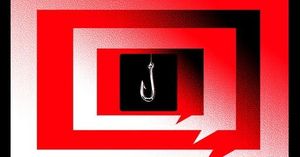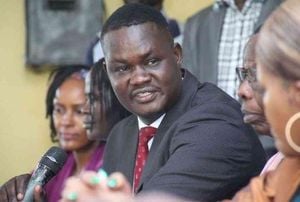In Morocco, a wave of youth-led protests has erupted into a nationwide movement, shaking the foundations of the country’s political establishment and raising urgent questions about government priorities, accountability, and the future of public services. What began as frustration over economic stagnation and allegations of corruption has, over the last two weeks, swelled into a potent call for the resignation of Prime Minister Aziz Akhannouch and a fundamental rethinking of how Morocco spends its resources.
According to reports published on October 5, 2025, by RFI and other outlets, thousands of demonstrators—many from Generation Z—have taken to the streets in more than a dozen towns and cities. Their message is clear: stop pouring billions into football mega-tournaments while hospitals crumble and schools languish. Slogans like “Stadiums are here, but where are the hospitals?” have become rallying cries, echoing from Casablanca to Agadir and beyond.
The spark for this unrest is twofold. First, there are persistent allegations against Prime Minister Akhannouch involving conflict of interest, illicit enrichment, and misuse of public funds. Second, the government’s multi-billion-euro commitment to co-hosting the 2030 FIFA World Cup, alongside this winter’s Africa Cup of Nations, has become a lightning rod for public anger. The estimated €6 billion being spent on stadiums and infrastructure stands in stark contrast to the country’s underfunded health and education systems—a contrast made all the more painful by recent tragedies, such as a string of deaths in a maternity ward in Agadir.
“Moroccan youth are taking to the streets to call for functioning hospitals, quality schools, and decent jobs,” Tahani Brahma, secretary general at the Moroccan Association for Human Rights, told RFI. “They're rejecting the reality of billions being spent on stadiums for the World Cup while basic services are collapsing. Most importantly, Moroccan youth do not want promises, they want their rights.”
Morocco’s young people—those born between 1995 and 2010—make up about a fifth of the nation’s 38 million inhabitants. Official statistics from August 2025 paint a bleak picture: unemployment stands at 35.8 percent for 15- to 24-year-olds and 21.9 percent for those aged 25 to 34. Their ability to mobilize rapidly online, through platforms like TikTok and Discord, has made them a powerful and unpredictable force in Moroccan politics.
But the anger isn’t just about the numbers. Many see the government’s response as emblematic of a deeper disconnect. Just last Friday, government spokesperson Mustapha Baitas appeared on Medi1 TV, where he was criticized for responding arrogantly to questions about the administration’s willingness to address protesters’ grievances. Rather than showing humility or acknowledging responsibility, Baitas dismissed the legitimacy of the demonstrations and accused journalists of acting as mouthpieces for the protesters. For many Moroccans watching, this was further proof that their leaders are out of touch and unwilling to listen.
“Instead of responding with tact to a question that accurately reflects the unbearable reality of most young Moroccans and low-income households across the country, he accused the journalist of acting as a spokesperson for the protesters,” noted one analysis published on October 5, 2025. “Worse yet, he categorically denied that the demonstrators had called for the government’s resignation.”
The government’s troubles don’t end there. A series of scandals—some ignored by sympathetic media, critics allege—have provided further fuel for the protests. Chief among these is the so-called 13-billion-dirham affair, in which funds earmarked for meat imports to lower prices instead benefited just 133 of the country’s wealthiest livestock farmers. Meat prices, meanwhile, have remained stubbornly high. There are also unresolved questions about the awarding of a desalination plant contract in the Casablanca-Settat region to a company linked to the Prime Minister, as well as the government’s failure to curb fuel prices despite falling global oil costs.
Against this backdrop, the question on everyone’s mind is: what comes next? Morocco’s 2011 constitution provides two main mechanisms for changing the government. First, King Mohammed VI has the authority under Article 96 to dismiss the government indirectly by dissolving one or both chambers of Parliament, after consulting the Constitutional Court and addressing the nation. However, some warn that such a move could set a dangerous precedent, encouraging future protests to demand royal intervention and potentially undermining Morocco’s fragile democratic institutions.
Alternatively, Parliament can pursue a motion of censure under Article 76. This requires the support of at least a quarter of the House of Representatives to initiate and an absolute majority—198 out of 395 members—to pass. Currently, if the Istiqlal Party (80 seats) joins forces with the opposition bloc (105 seats) and the Democratic and Social Constitutional Group (23 seats), they would have the 208 votes needed to topple the government. Notably, similar efforts have failed before: just last May, the Party of Progress and Socialism (PPS) and the Justice and Development Party (PJD) tried and failed to pass a motion of censure due to lack of support.
Yet, with public pressure mounting and the government’s credibility in tatters, the political calculus may be shifting. The Istiqlal Party, Morocco’s oldest political party, faces a stark choice: stand with the embattled administration and risk the wrath of voters, or break ranks and play a decisive role in restoring public trust. As one commentator put it, “If the opposition parties were to submit a motion of censure, it would not be the first time they’ve done so during this legislative term. ... The possibility of these same parties successfully passing a motion of censure this time is significantly higher than before.”
The stakes are high, not just for politicians but for the country as a whole. Morocco has made undeniable progress on the macroeconomic front, with record GDP growth and ambitious infrastructure projects. Tourism, which accounts for 7 percent of GDP, is booming—13.5 million visitors arrived between January and August 2025, a 15 percent increase over the previous year. The upcoming Africa Cup of Nations and the 2030 World Cup are expected to further boost the sector. But if the unrest continues, there are real fears that violence and instability could deter visitors and investors alike.
“Football is much more than entertainment or sport,” said Abderrahim Boukira, professor of the sociology of sport at Hassan 1 University in Settat. “It’s a vehicle for national pride and identity and a perfect tool for social cohesion and inclusion – if it is used in the right way. But also football exposes structural weaknesses such as inequality, lack of spaces and social exclusion.”
For now, the ball is squarely in the court of Morocco’s political opposition and its constitutional institutions. Whether they rise to the occasion or allow this moment to slip by will shape not only the fate of the Akhannouch government but also the trajectory of Morocco’s democracy for years to come.



